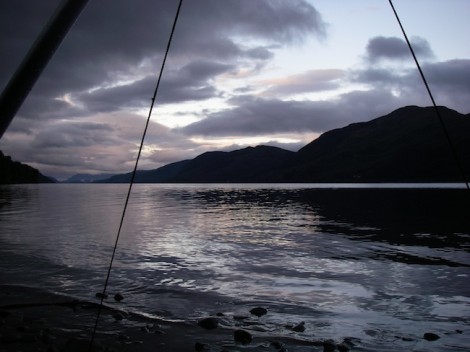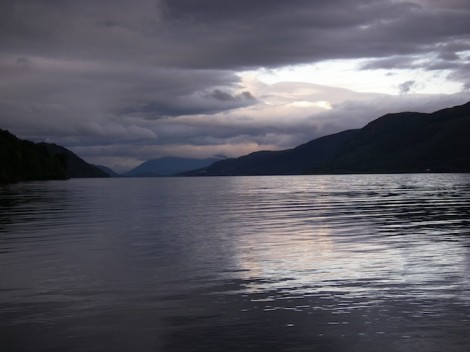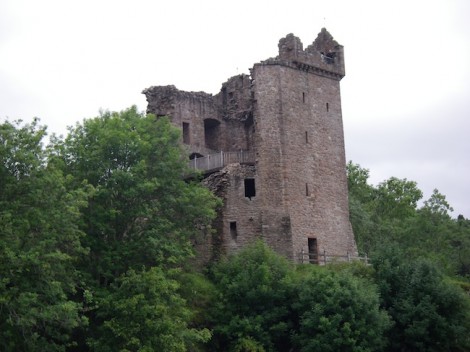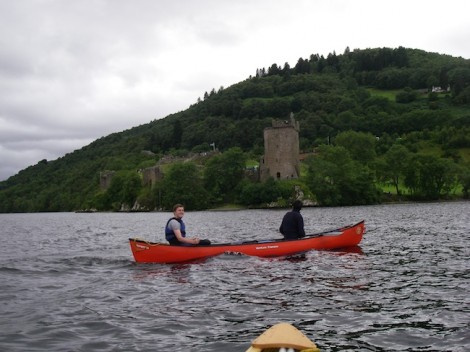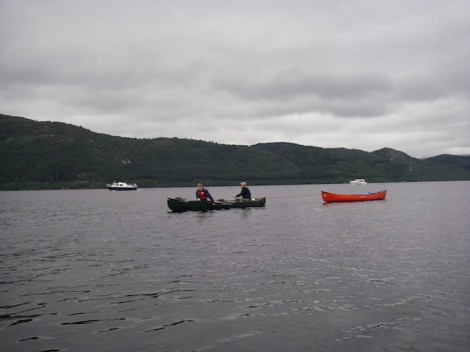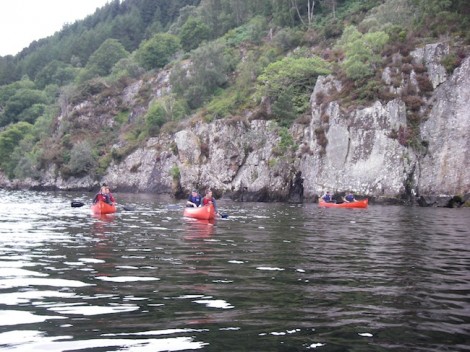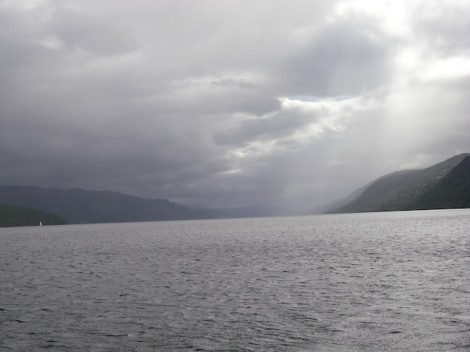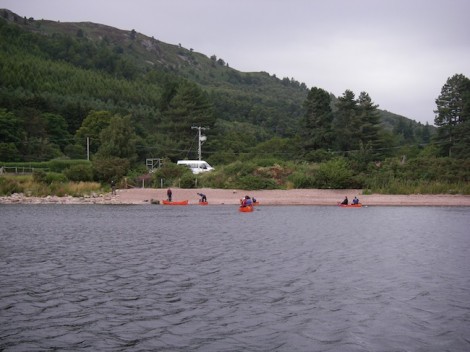End to end on Loch Ness – Part 2
Day two started much as day one had ended, cloudy and overcast with a stiffening wind. I was awake at first light as usual and used this time to plan the day.
On waking I was quite surprised to notice the that the water that was some two feet plus away from my tarp the previous night, was now considerably closer. In fact I could actually lean out of my tarp and fill my mug from the loch. It had rained the day before admittedly, but with the loch the size it is I was surprised to see how much it had risen overnight. A good learning point for the future me thinks!
Breakfast done and kit packed we set off hoping to make it to the end of the Loch on time, as planned for our pick up.
When tackling a multi day journey like this, some thought should be given as to how you carry your kit and load it into your canoe. As most of my journeying is solo I tend to adopt a three line system. First line is what I carry on my person or in my buoyancy aid, a bit like a small survival kit just in case I become separated from my boat and my main kit. This tends to be a good knife, a folding saw and a fire steel for lighting fire along with a bit of food (nibbles), simple first aid (electrical tape) and a light source.
Second line is a waterproofed day sack with all the stuff I may need during the day. This includes a warm top, hat, sail, food, drink,a comprehensive first aid kit and any thing else that may be needed to deal with the days events.
My third line is my main sack, containing all my important warm dry stuff like sleeping bag, spare clothes etc. Once this is packed and sealed at the start of day, it doesn’t get opened again until I make camp. This way there is little chance of things getting wet or lost.
As I was on open water I opted to lash my kit into the boat instead of leashes as once my boat was trimmed for the day little adjustment should be needed. Not only that but should the boat become swamped the lashed in kit can add buoyancy to a swamped boat.
The group had asked that we cross back over to the Western shoreline in order that they could have a better look at Urquhart Castle. Though now extensively ruined, the castle was in its day one of the largest strongholds of medieval Scotland. It is also near here that the majority of the sightings of Nessie occur!
So the plan now was to head further up the Eastern shore to Inverfarigaig before crossing back over to the castle. The wind was now quite fresh, and as we set off across it became apparent that one of the tandem crews was having directional issues. My only option was to take their painter and tow them the 1.5 km or so to the other side. Trim is really important when paddling canoe, especially in windy conditions. It can make the difference between a good day or a bad one.
After a short stop for lunch we continued on our way. Whilst crossing Urquhart Bay a strong gust of wind came in from our left. This very quickly carried one of the boats plus the boat it was towing over 1 km out into the loch. Beware of strong of wind gusts funneled in by the shape of the valleys and surrounding land mass.
Once re-grouped we continued on our way. The plan now was to get a pick up from Dores, just short of the end and back on the eastern side. It’s a long story as to the reason why we would have to cross the loch again!
The wind again picked up, and as had always been the case so far not going in our direction. As we neared Dores this wind had become quite fresh, so we made the most of any shelter created by the shore and stayed close in. The prospect of another crossing didn’t particularly excite me, especially after having had to tow a boat in the morning and the fact that people were now starting to feel a bit fatigued. Add to this the fact the crossing would be around 2 km or more, so we made a quick stop for a brew and I concocted a new plan. I made a quick call to our pick up and instead arranged them to meet us on the beach at Lochend.
Despite the fact that it appeared we were paddling into wind the clouds behind were getting darker and thicker. In fact it almost appeared what was behind us may be catching us up!
As is quite often the case when you have spent all day paddling into the wind, it suddenly changed direction and gave a slight helping hand for the last km or so. As the beach in the distance grew closer there was a certain air of success amongst the group . Only two days previously it had been a real challenge for them to paddle a few hundred metres with any hint of real control and for some it had been their first time ever in an open canoe. Now they had some 23 miles of water behind them and they really could say that they had paddled from end to end on Loch Ness.
I would recommend this trip to anyone who enjoys touring/journeying in open canoe. It can either be done as the trip described or as a part of the Caledonian Canal if looking for a longer trip l. There are lots of opportunities for wild camping, but I would recommend keeping this to the eastern side of the loch, as the A82 runs very close along the western shore potentially making for a noisy camp. The weather can really play a big part in this trip, and effect the outcomes. As mentioned the waves or swell can be quite big with the potential for swamping the boat. Make sure you check the forecast in advance and if in any doubt wait for better weather.
Well done to the group and I hope that during the week I manged to inspire and enthuse you enough about open canoeing that you will, if you haven’t already done so go and have your own canoe adventures.
See you on the water…
Jules
Please Leave a Reply
TrackBack URL :








